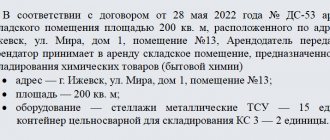What kind of document is this and is it necessary to prepare it?
The act of acceptance and transfer of documents is formed within the framework of corporate relations. This is a document that reflects the transfer of accounting, constituent and other documents from one person to another (or from one organization to another). The act signed by representatives of both parties confirms the fact that one participant in the legal relationship handed over the documentation, and the second received it.
The current legislation does not require that an act of acceptance and transfer of accounting documents or other internal documentation must be drawn up. But despite this, officials often use it. The document has legal significance, and if it comes to legal proceedings due to the loss of any papers, etc., it will act as important evidence.
This document is especially important if there is a change in the manager, his deputies or the chief accountant. This process is always accompanied by the delivery of cases, so every little detail is important here. Before signing the act, the interested party must check the package of documents provided to him, otherwise he may subsequently encounter unexpected troubles.
Results
The general director leaving the company must transfer the documents entrusted to him to the new one. The procedure for this transfer can be regulated at the level of local standards (established as an obligation in financial and government organizations). The main local legal act certifying the acceptance and transfer of documents when changing the director may be an act drawn up in 2 copies.
You can learn more about the features of legal relations that are carried out within the framework of corporate law in the articles:
- “Dismissal of the General Director at his own request”;
- “Sheet for familiarization with local regulations - sample”.
Sources:
- Federal Law of December 6, 2011 N 402-FZ “On Accounting”
- Federal Law of December 2, 1990 N 395-1 “On Banks and Banking Activities”
- Order of the Ministry of Finance of Russia dated December 28, 2001 N 119n
- Labor Code of the Russian Federation
You can find more complete information on the topic in ConsultantPlus. Free trial access to the system for 2 days.
Features of document preparation
The form of the act of acceptance and transfer of documents is not established at the legislative level. Each organization has the right to develop it at its own discretion. The document must include the following details:
- its full name;
- date and place of compilation;
- company name;
- composition of the commission (if appointed);
- a detailed list of documents transferred from one individual to another;
- assigned registration numbers of documents, cases, etc.;
- FULL NAME. and signatures of persons (who submitted and who accepted);
- signatures of the commission members.
When drawing up an act of acceptance and transfer of accounting documents, significant attention should be paid to the papers that are transferred in the original. A note about this must be made in the act. If the party that accepted the financial documentation loses some document and tries to blame the other party for it, you can always prove your case in court. It is also recommended to make copies of all transferred papers.
How to correctly draw up a transfer deed in 2020
The legislation of the Russian Federation does not have standards for the template of the acceptance and transfer act, but, as in every business certificate, such an act must display the following information:
- Title of the certificate.
- Number and date of registration, showing the locality where it was compiled
- List of transferred materials, their number and type (original or photocopy).
- Name of institution, full name parties who took part in signing the act.
- Signatures of representatives of the parties, certified by seals.
The acceptance and transfer form is written in two copies, with one copy given to each participant in the operation.
Before drawing up the act, you must first prepare the materials to be transferred. When filling out the transfer act, it is advisable to observe the following structure of the document, which can be divided into three sections:
- First section. Here the name of the form “Acceptance and Transfer of Documents” is filled in. Next, you need to display the date the certificate was filled out and the locality in which the operation was carried out. Afterwards, the details of the parties involved in the execution of the document are displayed. For legal entities - this is the name of the institution and full name. representatives of the parties. For individuals – full name and passport details.
- The second section is reserved for the list of documents to be transferred. For convenience, it is usually presented in the form of a table, displaying the following columns:
- No.
- Title of the document.
- Date, in accordance with the documentation in the institution.
- Final section. This part of the document displays the final information about the number of copies of the compiled document and the signatures of the parties to the transaction. For legal entities, here it is necessary to display not only the full name, but also the positions of the signatories, with confirmation of the transaction by the seals of the institutions.
Filling Features
When recording information in the acceptance certificate, it is necessary to comply with the specifications of the form:
- For example, when transferring materials internally, the name of the institution is filled in in the upper left corner. The resolution of the head of the institution is placed in the right corner.
- Then the date of preparation of the acceptance and transfer form is recorded.
- The descriptive part lists the full name. persons involved in the transfer of documents, displaying positions.
- Next, a table is compiled listing the documents to be transferred.
- Then the number of copies of the completed form is displayed
- At the conclusion, the signatures of the representatives of the parties are affixed.
If this document is intended for internal use of the institution, the document is approved by the head of the enterprise.
When filling out the interdepartmental form, paragraph No. 1 is not filled out and the signatures of the participants must be certified with seals.
The main purpose of the acceptance certificate is to prove that the documents were actually transferred in the quantities shown on the form.
Contents of the document
Each institution has the right to draw up an acceptance and transfer act in an individually developed form. In this case, an important circumstance is that the form reflects the following points:
- Name, date and place of writing of the certificate of transfer.
- Name of the institution where the transfer of documentation is carried out (for legal entities)
- Full name of the representative transferring the papers. If necessary, passport details are displayed.
- Full name of the representative accepting the papers (if the representative is from another institution, then the details and name of the institution are entered).
- A list of materials to be given, displaying the number of copies, number of pages, document number and date of creation. For large volumes of transmitting material, it is more convenient to compile lists in tabular form.
- At the end of the form the signatures of the participants in the operation are affixed, and during interdepartmental transfer it is additionally certified by the seals of the institutions.
It should be noted that such acts can be drawn up when accepting important documents for storage during the period of any activity. For example, you can submit documents to a representative who, by proxy of the customer, prepares foreign travel materials. If the contractor loses the transferred documents, such an act will be the basis for applying to any authority to resolve the dispute. Many more examples can be given showing the usefulness of drawing up such acts.
Drawing up an act when changing the general director
Drawing up an act of acceptance and transfer of documents when changing the director is a typical procedure related to the peculiarities of corporate relations. Some of the documentation is extremely difficult to restore, so the fact of transfer is carefully recorded. The receiving party should pay great attention to checking the constituent documents, licenses, powers of attorney, and contracts. If necessary, photocopies of the most important papers and a list of documents are attached to the act.
The direct obligation of the general director to transfer documentation under the act is not recorded anywhere. However, in paragraph 4 of Art. 29 of the Law “On Accounting” dated December 6, 2011 No. 402-FZ states that when changing the head of the company, it is necessary to ensure the transfer of accounting documents. Each organization determines the transfer procedure independently. Provisions regulating the mandatory transfer of documentation from the former general director to the new one should be enshrined in the local standards of the organization.
What is an act of acceptance and transfer
Concept and regulation
If the transfer is carried out between legal entities, the interested party is responsible for the registration . This type of accounting documentation has legal force if there is a need to resolve a dispute in court. Within the enterprise, acts are drawn up when moving documentation between employees, if their positions change or someone quits.
There are no legal standards for registration, with the exception of the transfer of documents to the archive (Order of the Federal Archive of February 13, 2002). In all other situations, it is necessary to rely on Art. 9 of the Law “On Accounting”, which establishes the rules for registration. The procedure and form may be indicated in the accounting policy or by a separate order of the director.
Compiled by whom and why
The head of the enterprise is responsible for organizing document flow. Depending on the size of the enterprise, documentation is carried out by employees of the relevant department (clerks) or persons appointed by a separate order of the director.
Document flow cannot be organized without control, so documentation is divided by type and transferred to employees responsible for application and safety. Employees change positions, quit, the company may undergo reorganization or liquidation, which entails the replacement of responsible persons.
If the process is not recorded, information may be lost, paper may be damaged, and it will be impossible to determine the culprit. Acts are created to document the fact of transfer of responsibility from one person to another in order to avoid disputes. The signatures indicate that the parties have no claims at a certain point. If disagreements do arise, the act serves as evidence in court proceedings.
Types and features
The document flow involves founding, project, accounting documentation, strict reporting forms and much more.
Most often, acts are drawn up when:
- dismissal of a manager or other employee holding a leadership position;
- change of chief accountant;
- transitions of employees to other positions;
- layoffs;
- registration of assignment agreements;
- transferring cases in the bankruptcy process to a trustee;
- transfer of documentation to the archive.
If a director or other officer changes, an appropriate order is issued based on the minutes of the meeting or the owner's decision (in writing). Next, an order is created to create a commission that will conduct the audit. Some owners believe that it is advisable to invite an independent auditor.
If a new director is already available, the process is carried out quickly. If the place is free, an employee is appointed who is required to accept the documentation. The right to sign on behalf of the director is transferred by order and notarized power of attorney. After a new manager is hired, the procedure is repeated.
The chief accountant may change if the previous one leaves the position or is fired. In this situation, a complete inventory of the property and verification of the correctness of registration and availability of documentation is most often carried out. A commission is appointed or an independent auditor is invited. The list is drawn up in the form of a table, the results of the inspection are reflected in the report. The former chief accountant receives one copy, the new one receives the second.
If ordinary employees change positions or quit, the procedure is less complicated and an audit is not required. If the package is small, no commission is created either.
- When registering an assignment (according to Article 385 of the Civil Code), the debtor’s contracts are transferred to the organization acquiring the right of claim. Documentation is carried out by the accountant of the organization transferring this right. If the claims are partially ceded, copies are transferred, if completely, the originals are transferred.
- Before moving documentation to the archive, it is sorted based on its shelf life. Documents with an expired storage period are sent to the archive, temporary storage papers are destroyed. A delivery inventory is created, which is verified in the archive upon acceptance. The act must indicate which papers specified in the inventory are missing and for what reason.
- Upon liquidation, all documentation (regardless of the storage period) is transferred to the archive (or legal successor). If the reason for liquidation was bankruptcy, the transfer is handled by the administrator. He enters into a storage agreement and documents the fact of transfer.
You don't have to look for the answer to your question in this long article! via the form (below), and our specialists will promptly prepare the best options for solving your problem and call you back on the day you submit your application. It's free!
Recommendations for drawing up the act
- The act of acceptance and transfer of documents (a sample of a simple form can be used as an example) is drawn up on the organization’s letterhead.
- The document can be generated on a computer or filled out by hand.
- The act is drawn up in two copies, one for each of the parties.
- Each copy must bear the signatures of officials and members of the special commission (if it was created).
- Certification with a seal is not required, but it can be done if desired.
- The act should contain a complete list of transferred cases (folders). If necessary, a separate application can be used to create a detailed inventory of investments in them. It is necessary to correctly indicate the name and number of available copies of documents.
- If valuable documents are transferred, the act indicates the full details of the organization and passport details of the interested parties. When transferring standard documentation, you can use a simple deed form.
Since the general director and chief accountant are financially responsible persons, before transferring affairs they are required to conduct an inventory of property and documents. This is stated in paragraph of the Methodological Instructions, approved. by order of the Ministry of Finance of the Russian Federation dated December 28, 2001 No. 119n.
Act of acceptance and transfer of documents from the former director to the new one: document structure
Such an act may contain the following elements:
1. Information block, which reflects:
- date, place of drawing up the act;
- Full name of the resigning director;
- Full name of the new director (deputy).
2. Block, which reflects the actions certified by the act: transfer by the resigning director and acceptance by the new one of documents related to the financial and economic activities of the organization.
3. Block with a list of documents to be transferred (by categories, which are reflected in the Regulations).
This block is optimally presented in the form of a table, the columns of which reflect:
- serial number of the position;
- name of the transferred documents (inventory numbers for groups of transferred documents);
- number of sheets of transferred documents (number of documents in inventories);
- necessary notes.
4. Block with signatures:
- the person transferring powers and documents;
- person accepting powers and documents.
In some cases, this block may be supplemented with signatures of the chief accountant and other competent persons. In addition, there is a possibility that the deed will need to be certified by a notary. Let's consider what factors this may be due to.
What are such acts used for?
This type of act is used by legal entities when it is necessary to transfer documents that are of high importance for each of the parties. These can be either various annexes to the contract or local documents of a particular enterprise. Most often, information about the dismissal or transfer of employees of an organization, as well as the closure of company branches, is transmitted in this way.
Signing in these acts indicates receipt of documents, which helps in the future to prove that the receiving party has fulfilled its obligations . The form in question can be either an integral part of the contract or an independent document in the event that one of the parties requires such documents. It is important to pay attention to the fact that the form in question is endowed with legal force only if the correct drafting is taken into account. This means that this form can act as evidence during legal proceedings. The act of acceptance and transfer of documentation is drawn up in two copies, one of which is transferred to the recipient, and the second remains with the sender.










